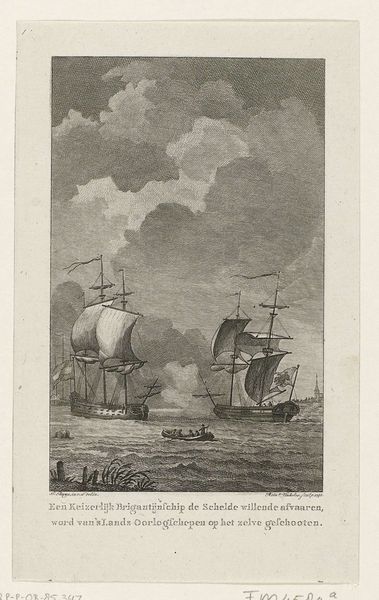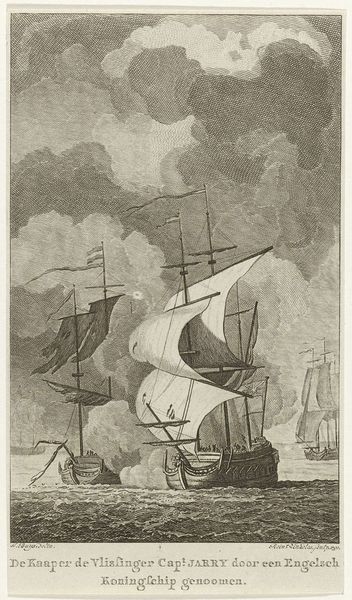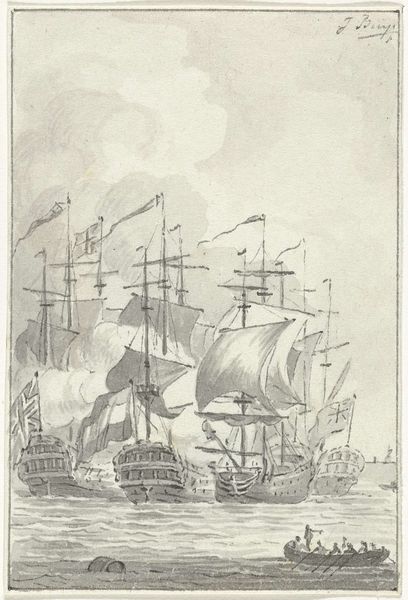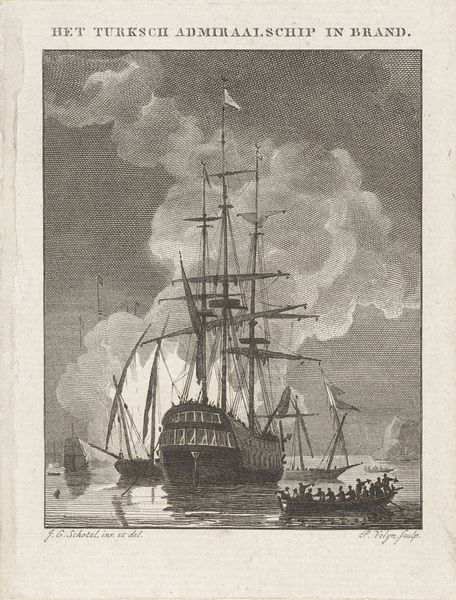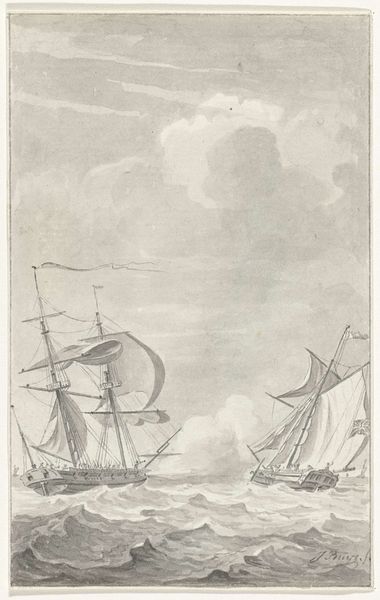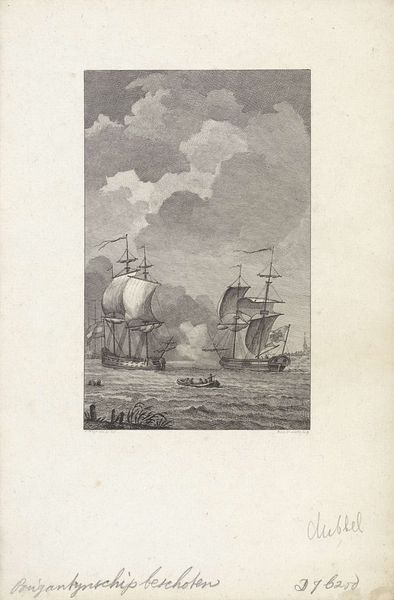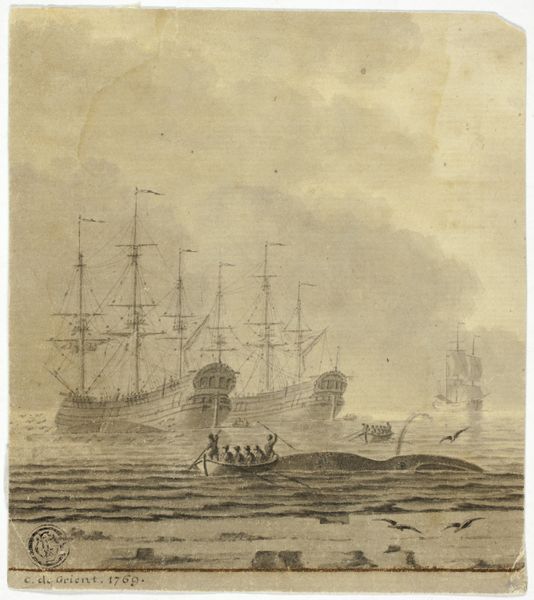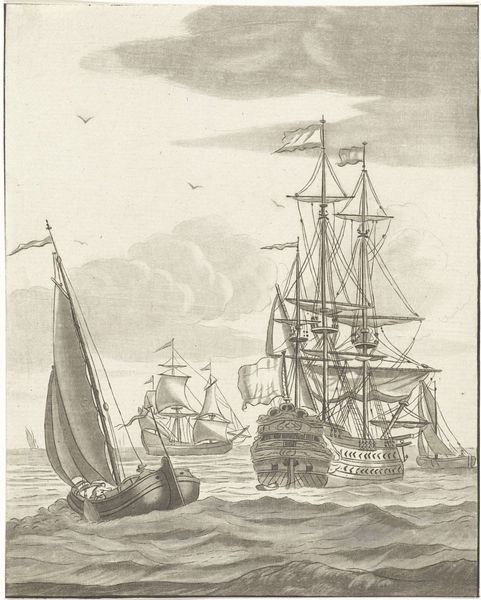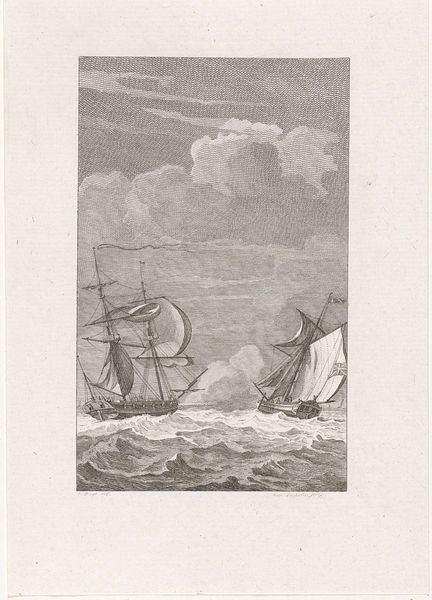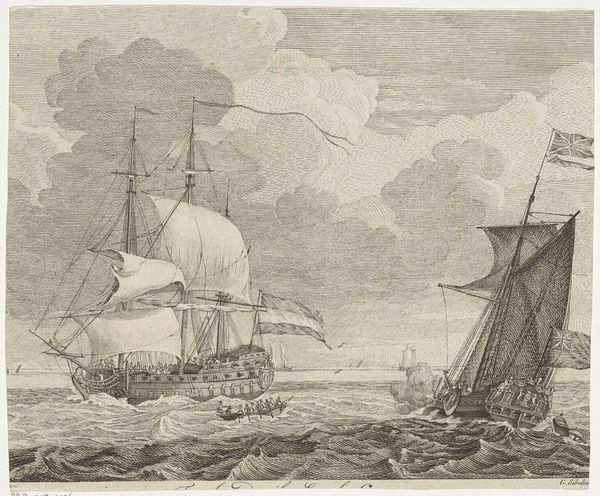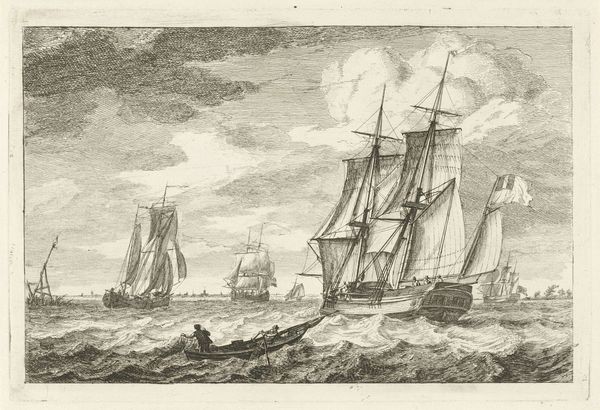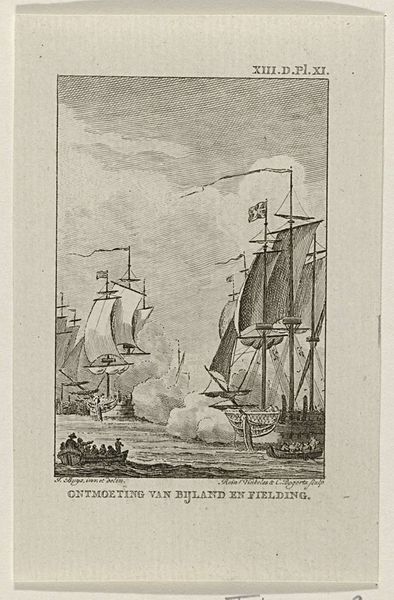
Kapitein Statink bij Calais in gevecht met twee Engelse oorlogsschepen, 1780 1792
0:00
0:00
reiniervinkeles
Rijksmuseum
Dimensions: height 190 mm, width 113 mm
Copyright: Rijks Museum: Open Domain
Curator: Let's focus on this engraving by Reinier Vinkeles, created around 1792. It's titled "Kapitein Statink bij Calais in gevecht met twee Engelse oorlogsschepen, 1780," currently held at the Rijksmuseum. It depicts a naval battle, rendered in fine detail. Editor: It certainly conveys a dramatic moment, doesn’t it? The intensity of the scene is striking – those ships enveloped in smoke, caught in the midst of combat. I’m immediately struck by the asymmetry and chaotic feel despite it clearly being staged and not representational of how war is actually experienced by those other than the captains commanding ships like those represented in the print. Curator: Indeed. Vinkeles, working years after the event, seems interested in memorializing, or perhaps even mythologizing, this specific Dutch naval encounter with the English off Calais. Remember that maritime power was deeply connected to Dutch identity, to their global economic power structures and of course to their colonial endeavors. Editor: Right, it's vital to see this within that colonial frame. What are the potential ramifications for both sides following a standoff like the one captured? Whose interests were really served here? Was the point of producing prints of this event meant to celebrate, or even to challenge Dutch militarism in that particular political and temporal context? Also, the idea of presenting the English as an opponent feels somewhat hollow knowing that this historical moment comes well before decolonization truly enters the global political stage. Curator: That's insightful. And you're right, the production of this kind of imagery often had complex political aims, negotiating national identity and sometimes, as you suggest, subtly questioning power. Prints like this one helped shape public perception of naval conflicts and national pride, even if the reality for those actually on board ship and those colonized by imperial naval presence around the globe was less valorous. Editor: Ultimately, the image offers a snapshot into a complex power dynamic and a critical era for the construction of European imperial identities. Its enduring relevance hinges on that interrogation. Curator: I agree. It prompts essential conversations about national narratives and the role of historical artwork in constructing, reinforcing and indeed justifying those self-serving and oftentimes exploitative national mythologies.
Comments
No comments
Be the first to comment and join the conversation on the ultimate creative platform.
